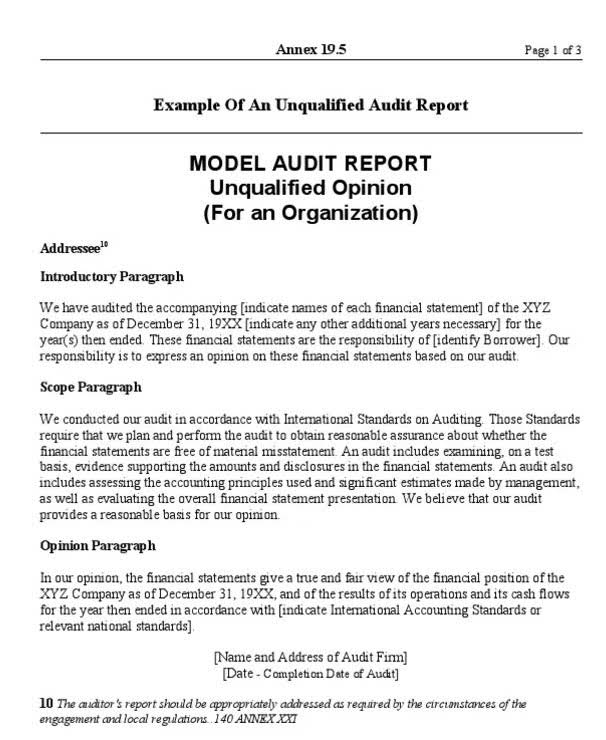
Assets are listed on one side, while liabilities and equity make up the other, and both sides must always match. If they don’t, something’s off, and it’s your job to find out why. As an accountant, you need the accounting equation because it’s the foundation of how financial information is recorded, tracked, and reported. It ensures every transaction makes sense mathematically and logically. It’s how you know the books are balanced, and how you can spot when they’re not. The accounting equation is a core principle in the double-entry bookkeeping system, wherein each transaction must affect at a bare minimum two of the three accounts, i.e. a debit and credit entry.
Customer ServiceCustomer Service
Both liabilities and shareholders’ equity detail how the assets of a company are financed. It will show as a liability if it’s financed through debt but in shareholders’ equity if it’s financed through issuing equity shares to investors. Under the accrual basis of accounting, this account reports the cost of the temporary help services that a company used during the period indicated on its income statement. A long-term asset account reported on the balance sheet under the heading of property, plant, and equipment. Included in this account would be copiers, computers, printers, fax machines, etc. Things that are resources owned by a company and which have future gym bookkeeping economic value that can be measured and can be expressed in dollars.
- Liabilities also include amounts received in advance for a future sale or for a future service to be performed.
- The three main systems used in business are manual, cloud-based accounting software, and ERP software.
- Under the accrual basis of accounting, revenues are recorded at the time of delivering the service or the merchandise, even if cash is not received at the time of delivery.
- The equation forms the structure of the balance sheet, categorizing assets, liabilities, and equity.
- For a start-up business, the beginning amounts for all accounts are zero.
Using Equations in Financial Analysis
You’re not just bringing in cash, you’re increasing the business’s value. Revenue doesn’t go into a “revenue” account in the equation itself; it flows into equity, typically through retained earnings. Due within the year, current liabilities on a balance sheet include accounts payable, wages or payroll payable and taxes payable. Long-term liabilities are usually owed to lending institutions and include notes payable and possibly unearned revenue. Whether you call it the accounting equation, the accounting formula, the balance sheet equation, the fundamental accounting equation, or the basic accounting equation, they all mean the same thing. Before explaining what this means and why the accounting equation should always balance, let’s review the meaning of the terms assets, liabilities, and owners’ equity.

Assets
The Shareholders’ Equity part of the equation is more complex than simply being the amount paid to the company by investors. It is actually their initial investment, plus any subsequent gains, correct accounting equation minus any subsequent losses, minus any dividends or other withdrawals paid to the investors. The shareholders’ equity section tends to increase for larger businesses, since lenders want to see a large investment in a business before they will lend significant funds to an organization. This transaction affects both sides of the accounting equation; both the left and right sides of the equation increase by +$250. Journal entries often use the language of debits (DR) and credits (CR).
- It is usually considered the most fundamental concept in the accounting system.
- The monthly payment of rent to a landlord, the purchase of equipment from a supplier, and the sale of goods to customers are all examples of external transactions.
- The loan will create $5m of cash to spend, but it also creates a liability of $5m as it will need to be repaid at the end of the term.
- The accounts are designated as an asset, liability, owner’s equity, revenue, expense, gain, or loss account.
- Owner’s equity represents the residual interest in a business after subtracting liabilities from assets.
Cash Management

Insurance Expense, Wages Expense, Advertising Expense, Interest Expense are expenses matched with the period of time in the heading of the income statement. bookkeeping Under the accrual basis of accounting, the matching is NOT based on the date that the expenses are paid. The contra owner’s equity account used to record the current year’s withdrawals of business assets by the sole proprietor for personal use. It will be closed at the end of the year to the owner’s capital account. That part of the accounting system which contains the balance sheet and income statement accounts used for recording transactions. Although revenues cause stockholders’ equity to increase, the revenue transaction is not recorded directly into a stockholders’ equity account.
- It can be regarded as the very basis of maintaining accounts for any particular organization.
- That’s essential for both internal strategy and external reporting.
- The creditors provided $7,000 and the stockholders provided $9,300.
- Cash flow issues make it important to track what assets are owned and what debts are owed.
- Well-managed businesses strive to free up human labor to work on value-based vs. routine accounting tasks while automating manual processes.
- The double-entry accounting system relies on this equation to maintain balanced books and prevent costly errors.
- This arrangement can be ideal for sole proprietorships (usually unincorporated businesses owned by one person) in which there is no legal distinction between the owner and the business.

This action increases the company’s cash (an asset) and concurrently increases its loans payable (a liability). Both sides of the equation increase by the same amount, maintaining the fundamental balance. If a business then purchases equipment using cash, one asset (equipment) increases, while another asset (cash) decreases. In this case, the total assets remain unchanged, and the equation stays balanced without affecting liabilities or equity. The accounting equation mirrors the structure of the balance sheet, with assets listed on one side and liabilities and equity on the other. This alignment ensures the balance sheet always reflects a company’s financial position accurately.
How the Accounting Equation Works in Business
The double-entry accounting system relies on this equation to maintain balanced books and prevent costly errors. As a result of this transaction, the asset (accounts receivable) and the owner’s equity (revenues) both increased by $5,000. Creditors and owners can both stake a claim on the assets of a company. In order to determine what belongs to the owners, we first take the claims that the creditors have (which are liabilities) and subtract those from the assets.
